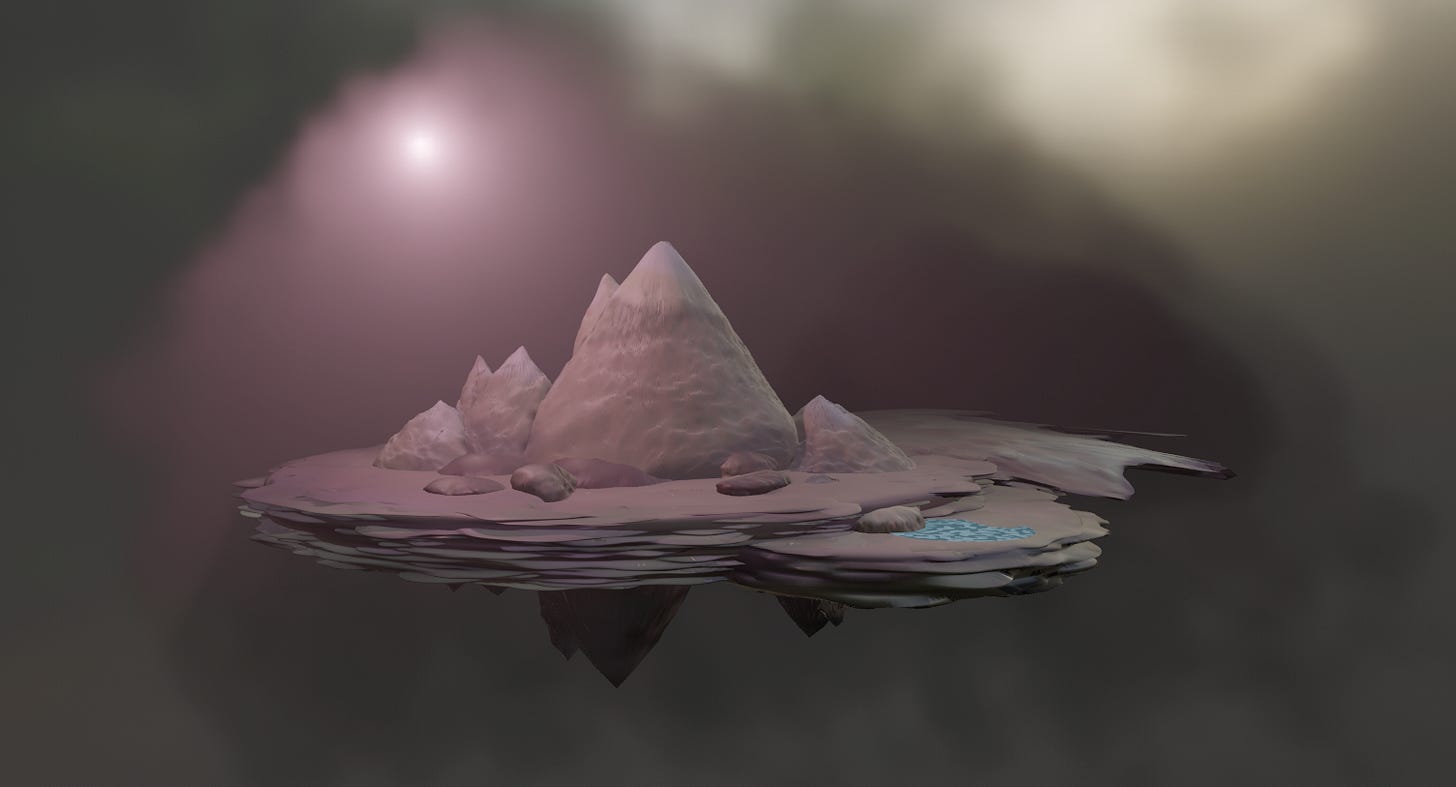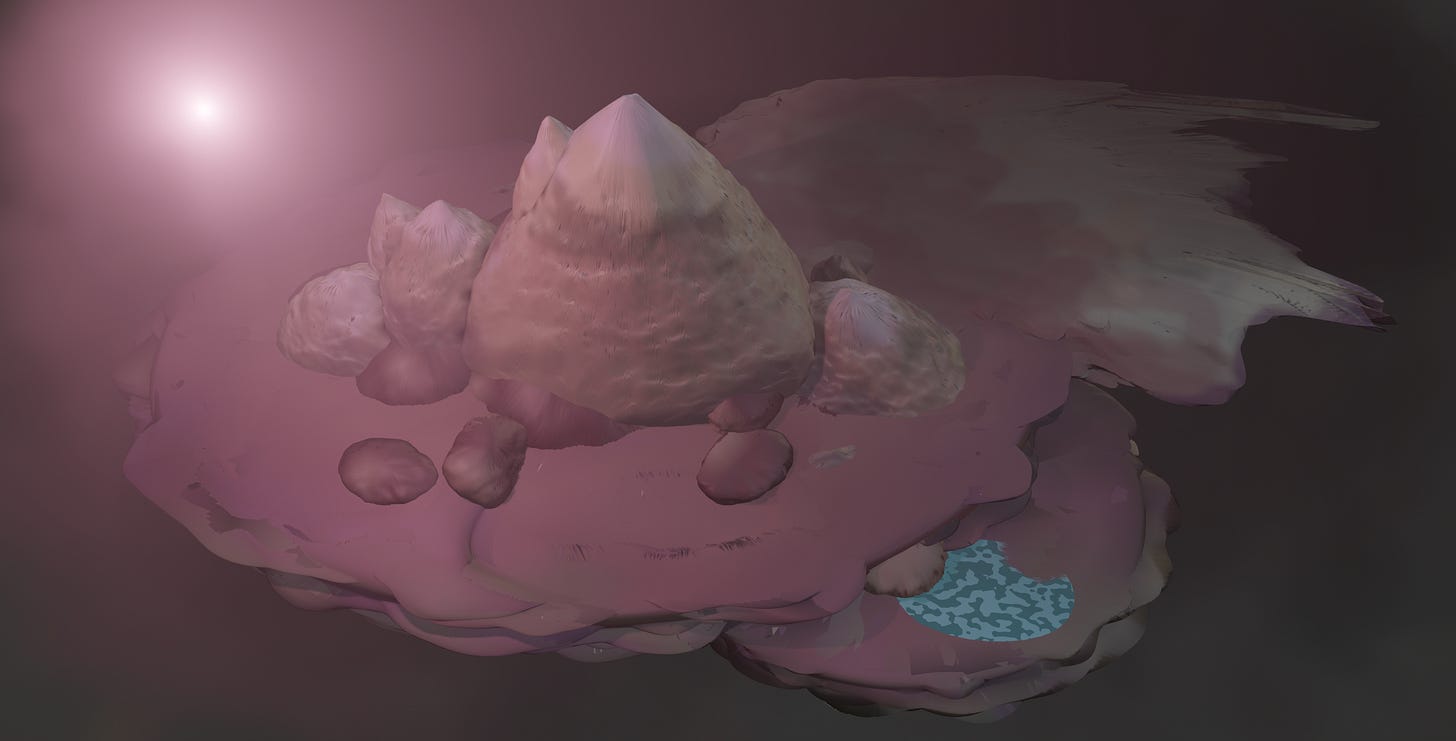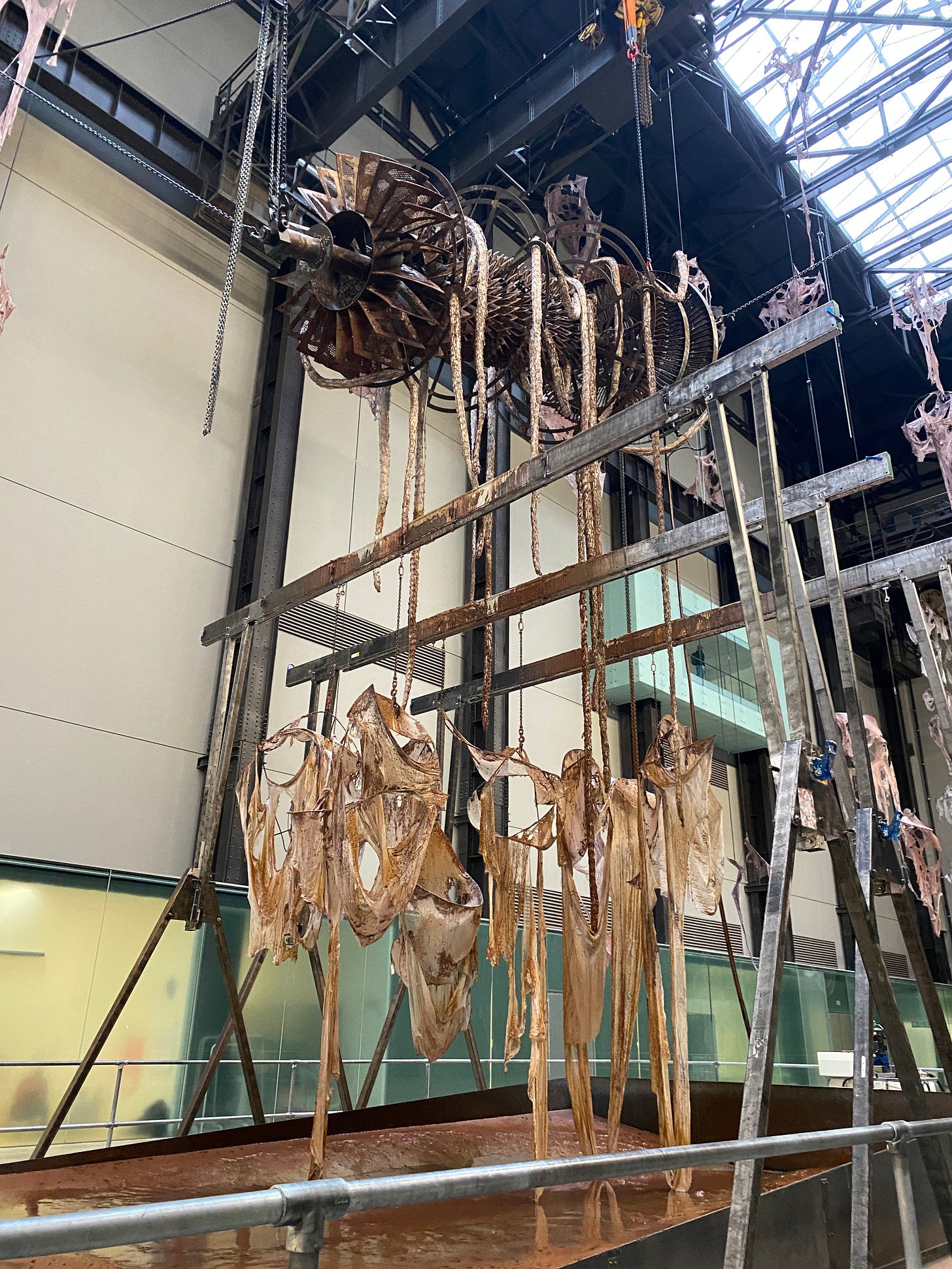World-building with Christian Jago
Last month I had a brilliant one day online workshop with artist Christian Jago, learning about all things world-building.
I originally wanted to learn world-building skills as a way to expand the scope of my own creative projects, but I started to think how interesting it would be to actually create and build a world from scratch as a project in itself. One of the joys of being Autistic is a rich internal world (the root of the word meaning ‘withdrawal within self’). Whilst living in this inner world can also be deeply isolating, when I’m immersed in researching and creating something, I’m usually at my happiest. I began to think about this experience as akin to going to a specific place, and what if that place existed as an actual, physical world?
During the workshop I created a floating island- which I rather lazily named ‘The Isle of Summoning’- a healing place which could be called and visited only by those who know how. As part of the workshop Christian and collaborated by drawing maps based on spoken descriptions of each others’ worlds, which was such an interesting exercise: seeing how someone else might interpret a world you created.
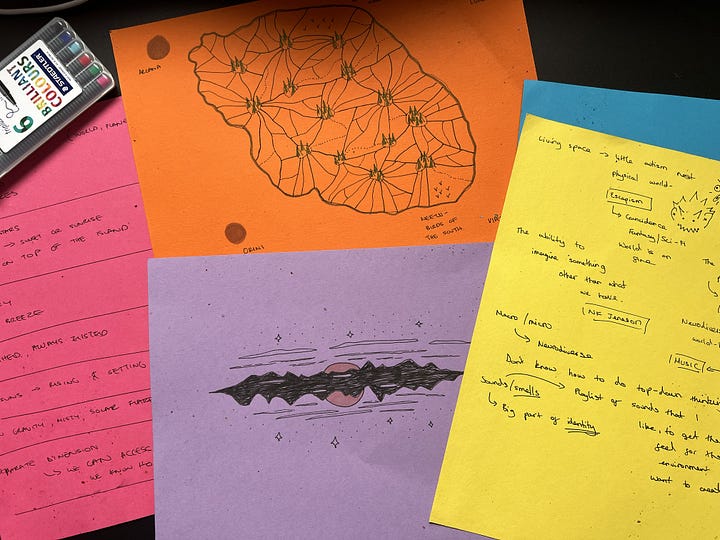

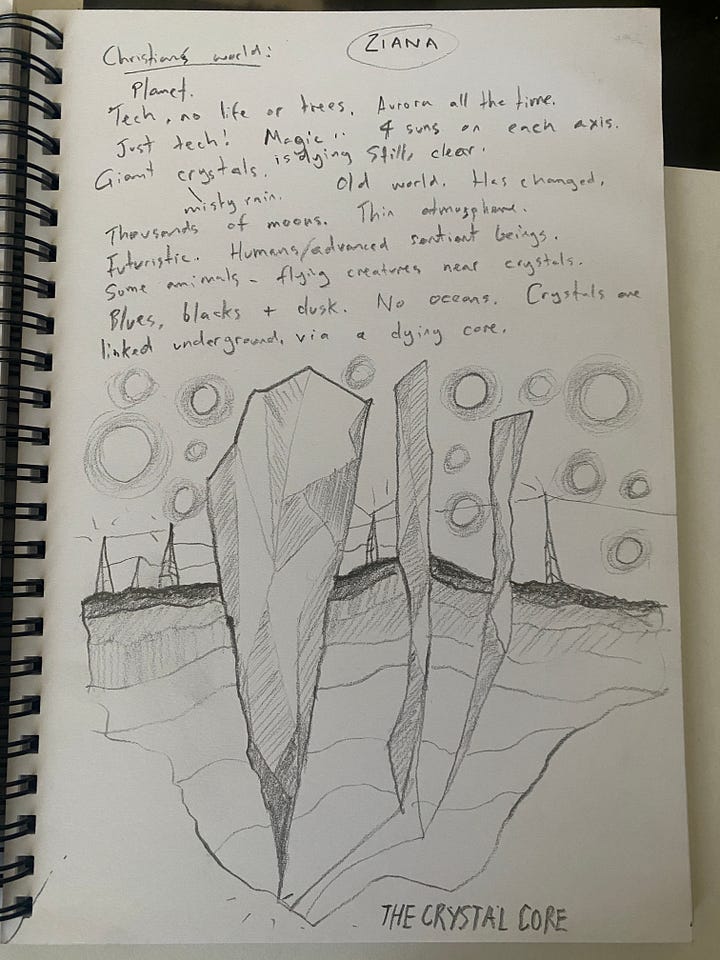
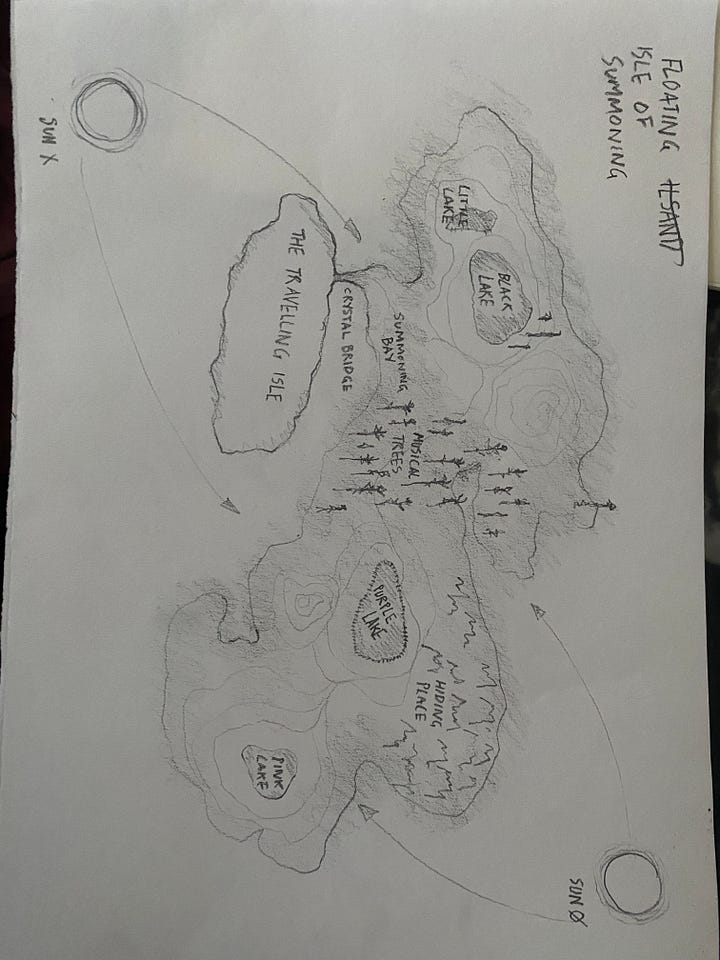
I created a 3D mock-up of the island in Blender- all from bed, whilst I was unwell- and enjoyed the process of doing this so much. It was also a great way to continue practicing my Blender skills- a programme I love returning to, but that always requires a lot of relearning.
World-building and disability
As is often the case with the way I research, there’ll come a time when something clicks- my creative process often begins with an interest in something, which I will then dig into and live alongside whilst I figure out what exactly about the subject has captured my creative attention. With ‘a stone circle for the future’, I found they were pointing me towards the act of collaborative building for the future and collective rituals. It reminded me of my need to expand the way I work with others, following the community dispersal triggered by COVID-19 lockdowns, the cost of living crisis and my own health difficulties. (I’ll be exploring these concepts further in a residency at Fabrica Gallery in Jan 2025.)
My growing interest in sci-fi/fantasy realms and world-building led me to read an excellent edition of Uncanny magazine, entitled Disabled People Destroy Fantasy Fiction. Fantasy itself is traditionally problematic to differently abled people- with physical disabilities usually signifying an ‘evil’ or ‘untrustworthy’ character- however, the introduction to this series of short stories by writer Katherine Duckett connected a lot of my own feelings in a way I’d been unable to put into words myself:
“Through fantasy and its infinite possibilities, I could dream of worlds where my body fit better, where bodies like mine were the norm, or where my body could transform, reshaped as I wanted it to be…
…the quest for connection, and the difficult and risky attempt to explain to someone else what it means to inhabit a particular kind of form, a particular kind of mind…
We’re used to imagining new worlds. We are experts in reshaping reality. We do it all the time to exist in a world that often isn’t built for us.”
This last quote in particular struck a chord with me, and I’ve been thinking a lot since reading this about the creative possibilities of connecting fantasy world-building with the social model of disability. More research to come!
Tate Modern: the most accessible gallery?
I recently took a trip up to London to meet up with my friend James, who was in the city for an event, and we agreed to meet at the Tate. The Tate has long been a place I return to frequently, and it was during this recent visit that I realised that a lot of the appeal of this place has to do with its accessibility. It is free to enter, temporary exhibitions are affordable for those on Universal Credit, it is extremely spacious (particularly good for those of us who are immuno-compromised, especially after Covid- in fact, the Tate was the first gallery I visited once it was ‘safer’ in late 2021). There is ample seating, lifts and quieter areas, clear signage and (most beneficial to me, with my condition) lots of toilets! It’s rare I’ve had to queue for them in recent years.
Of course, as one of the biggest, well-funded galleries in the world, all of the above should be as standard, but the Tate has still come under fire for some pretty horrendous accessibility oversights. I have experienced first-hand the difficulties of trying to make a space accessible, when I tried to change a small step in a tiny DIY gallery into a ramp. Spoiler alert- it simply *wasn’t possible* financially or legally to do it in the correct way that would protect the gallery should someone have an accident. I learned a depressing lesson- the rules about making spaces accessible are often so restrictive, time-consuming and expensive that most spaces will simply not have the resources and so won’t bother.
The Tate however, *does* have the resources, and so should be held to account when they make accessibility errors. Sadly, this sort of stuff scares a lot of galleries off, which is a real shame for differently-abled people who want to go and experience art.
And on to the art…!
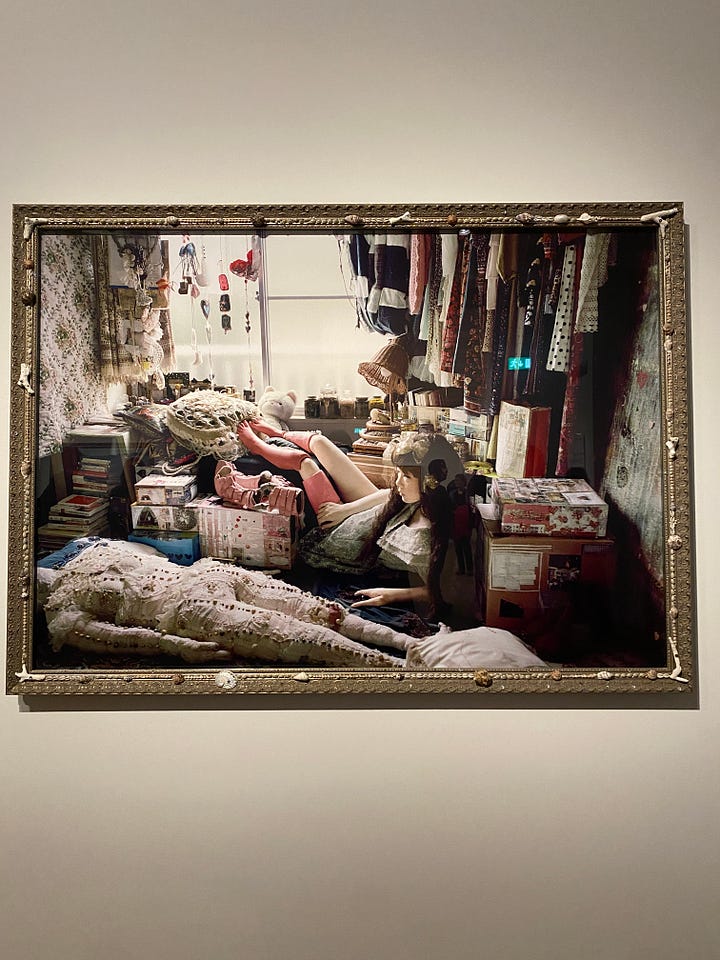

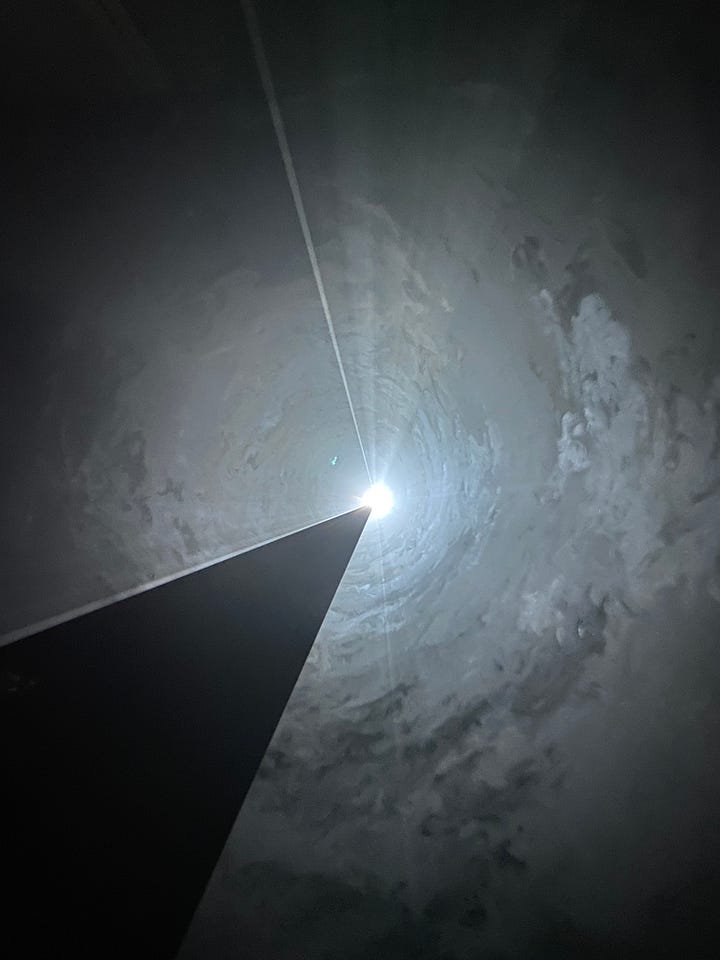
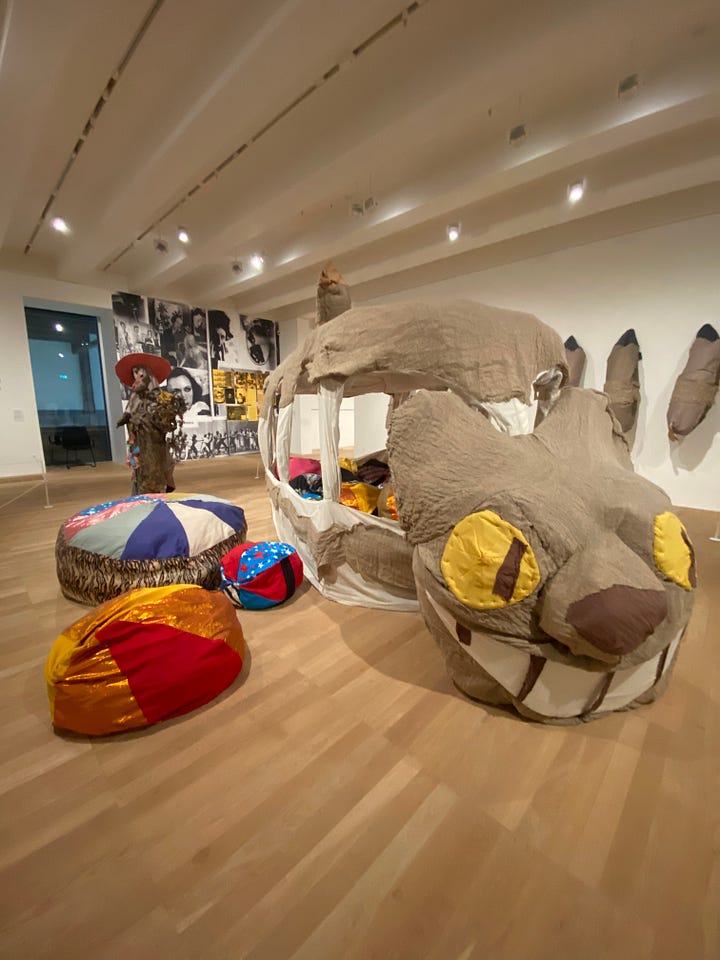
I loved Mari Katayama’s large-scale self-portraits in ‘I’m wearing little high heels I have child’s feet’- showing the artist in her room, surrounded by sculptures and personal items, part of a project where she has documented her process of making and wearing high heels with her artificial legs. Despite their large scale, these images felt so intimate, inviting the viewer into a different world- disability world-building in action!
Pipilotti Rist’s ‘Lungenflügel’ invited the viewer to remove their shoes and sit on a soft carpet and cushions to watch the dreamy video piece. I spent some time sitting here, (I will always take the suggestion to sit and get comfortable in a gallery!) and I was reminded of how removing one’s shoes can invoke a sense of homely comfort, especially in stark, concrete, public spaces. (Although, somewhere to sit and put your shoes back on would have been good, Tate!)
Anthony McCall’s minimalist light sculptures were delightful, however the curation of the one main space felt less like a contemporary art display and more like one of those ‘immersive experiences’ that I’ve ranted about before. I did love standing within the tunnels of light and smoke and seeing small children’s heads popping up excitedly, alongside equally excited adults- the effects of the sculptures was mesmerising- but I would have liked more context around the artworks than a single room of photos beforehand. Would certainly recommend going on a quieter day if you don’t want to be surrounded by people taking photos and videos (which of course is understandable!)
Finally, even though I was quite tired by this time, I loved the main Turbine Hall piece ‘Open Wound’ by Mire Lee, envisioning the space as an ‘industrial womb’, a frightening meat-grinder-esque machine eats and discharges fleshy sculptures that are then left to dry and displayed from the ceiling by technicians. The machine was ‘having a rest’ when we were there, which was disappointing, but I was intrigued by the concept nonetheless- of “witnessing (the process of) a human life….caught in a larger machine.” Certainly resonated given the times we find ourselves living in, and darkly amusing that the commission itself is sponsored by…a car manufacturer.
News from the biome 🌱
Cool projects and events from my friends, collaborators and networks:
This will be an excellent drawing evening, led by 2 brilliant people: https://www.eventbrite.co.uk/e/drawing-dada-a-night-inspired-by-the-surrealists-tickets-1065667222349
Helen’s thought-provoking and original art project about DV expressed through a series of cocktails: https://www.instagram.com/helen_suzanna_birkmyre
Links + sources
https://kateshieldsart.squarespace.com/works/a-stone-circle-for-the-future
https://www.uncannymagazine.com/article/disabled-people-destroy-fantasy-fiction-introduction/
https://www.shapearts.org.uk/news/text-and-audio-social-model
https://www.tate.org.uk/visit/tate-modern/display/performer-and-participant/mari-katayama
https://www.tate.org.uk/art/artworks/rist-lungenflugel-t16113

